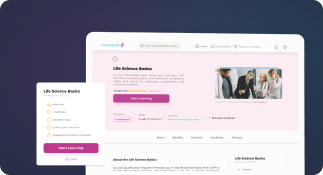Regulatory Affairs and Pharmacovigilance
Definition
Regulatory Affairs and Pharmacovigilance are two interconnected disciplines within the pharmaceutical and life sciences industry. Regulatory Affairs (RA) involves ensuring that companies comply with all regulations and laws pertaining to drug development, approval, and marketing. Pharmacovigilance (PV) refers to the science and activities related to the detection, assessment, understanding, and prevention of adverse effects or any other drug-related problems.
Detailed Explanation
Understanding Regulatory Affairs (RA)
Regulatory Affairs serves as the vital link between pharmaceutical companies and regulatory agencies such as the U.S. Food and Drug Administration (FDA), the European Medicines Agency (EMA), and other global health authorities. Professionals in this field manage the submission of Investigational New Drug applications (INDs), New Drug Applications (NDAs), Marketing Authorization Applications (MAAs), and ensure that all documentation complies with current laws and guidelines.
Key Functions of Regulatory Affairs:
- Preparation and submission of regulatory documents
- Monitoring changes in regulatory legislation and guidelines
- Strategic planning for drug approval pathways
- Labeling and advertising compliance
- Lifecycle management of approved products
Understanding Pharmacovigilance (PV)
Pharmacovigilance is focused on drug safety. It encompasses a wide range of activities including the collection and analysis of adverse drug reactions (ADRs), signal detection, risk management, and communication of safety information. The goal is to ensure that the benefits of a medicine outweigh its risks throughout its lifecycle.
Key Components of Pharmacovigilance:
- Adverse event reporting and follow-up
- Signal detection and evaluation
- Risk Management Plans (RMPs)
- Periodic Safety Update Reports (PSURs)
- Post-marketing surveillance studies
Synergy Between RA and PV
Though distinct, Regulatory Affairs and Pharmacovigilance are deeply interrelated. Regulatory professionals rely on pharmacovigilance data to support regulatory submissions, update product information, and fulfill post-marketing commitments. Conversely, pharmacovigilance relies on regulatory guidance to ensure that safety data is collected and reported in compliance with legal frameworks.
For example, when a safety signal is detected in PV, the RA team may need to submit a variation application to update the product label or risk management plan. In global pharmaceutical companies, cross-functional collaboration between RA and PV teams is essential to maintain compliance and protect public health.
Real-World Applications
- Drug Development: RA ensures investigational drugs meet regulatory requirements, while PV assesses safety during clinical trials.
- Product Launch: RA manages marketing authorization, and PV sets up systems for post-market safety monitoring.
- Post-Marketing Surveillance: PV tracks adverse events and RA communicates changes to regulatory bodies.
Related Concepts
- GMP (Good Manufacturing Practice)
- ICH Guidelines
- Clinical Trials
- Drug Safety
References
- FDA – Regulatory Affairs
- EMA – Pharmacovigilance
- WHO – Pharmacovigilance



